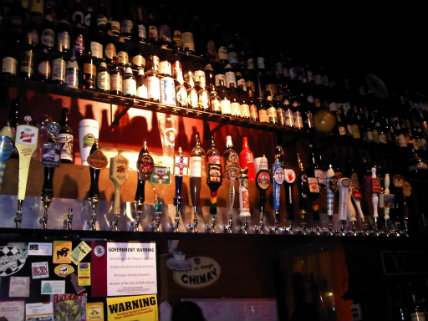The Beer Companies Behind Budweiser and Miller Lite Are Merging. There's No Need for Regulators to Get Involved.
America's beer market is as competitive as it's ever been.

The most unpleasant thing about the just-announced plan to merge the world's two biggest beer-makers, Anneuser-Busch Inbev (Budweiser, Bud Light, Corona) and SABMiller (Miller Lite), in a $100 billion deal, is not the thought of mixing two foul-tasting watery light beers together (although, eww), but the idea that the deal will, once approved by British regulators, will, as USA Today reports, "likely prompt intense anti-trust reviews in both the U.S. and the European Union."
It's true that, if the sale goes through, it would be an extraordinarily large merger: the biggest beer deal ever, and among the five largest acquisitions in history. The deal would result in the newly merged BudMiller* controlling eight of the world's 10 biggest beer brands, or about 30 percent of the global beer market.
But size alone is no reason for the government to pry into a deal like this. The fact is that the U.S. beer market is incredibly competitive these days. If you've been buying beer at a local grocer for the last decade or two, you've probably watched as the aisles fill up with an ever larger number of brands and tastes and styles. At bars, taps that were once filled exclusively by Bud and Miller and now packed with regional variants and obscure tastes from across the country.
If you love beer (I love beer), this is a great time to be alive. And the biggest reason why is the craft and microbrew explosion, which over the last few decades has gone from basically having no market presence to representing about 10 percent of the U.S. beer market, with roughly $100 billion in sales. In the space of a handful of presidential terms, America went from housing about 50 small breweries to more than 2,500.
The current boom started in the 1980s following the end of homebrew ban left over from prohibition. (Thanks, as always, to Jimmy Carter willingness to deregulate.) Which means that Big Beer got big thanks in part to an assist from the government.
The corporate beer brands still do big volume, but they have faltered in a world of intense competition. And the next generation of beer drinkers just isn't interested. Brands like Budweiser have had a difficult time attracting young drinkers, with about 44 percent of 21-27 year old drinkers saying they've never tried the stuff. Craft beer and other newfangled options (some made by big beer makers), meanwhile, have made for a nearly 9 percent decline in shipments, according to The Wall Street Journal.
As a result, corporate beer marketers have resorted to hilariously inept measures to promote their offerings as pseudo-craft beers. Leaked marketing documents from Anneuser-Busch, for example, pitched the company's mediocre Shock Top as one of its sub-brand's "big bet in the battle against Micro Craft," a beer designed with a "flavoursome taste to drive Shock Top penetration with Experience Maximizers in the 'Reward Myself' need state." Shockingly, this company is having a hard time attracting young drinkers.
Anyway, that's what this merger is about. Anneuser-Busch wants to buy SABMiller because big beer brands are struggling to compete and bring in new, young customers in wonderfully diverse, incredibly competitive market for beer, and figure the only way to hold their ground is to join forces.
The Big Two may perform better together, but I suspect that the post-merger landscape would look a lot like the current one, with corporate beer continuing to sell a lot of volume while microbrewers that make a product that actually tastes good continue to eat into their sales. A corporate merger isn't going to make Bud Light taste any better. Either way, there's no reason for regulators to get involved in a market as obviously competitive and innovative (and tasty) as this one.
(*I just made this name up.)


Show Comments (78)